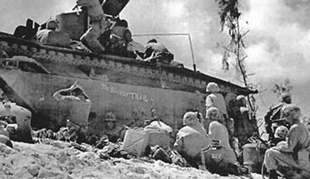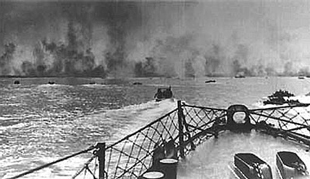

A postdoctoral researcher and a graduate student from the University of Hawaiʻi at Hilo embark on an expedition in early April to study a remote World War II battlefield in the Western Pacific.
John Burns is the co-principal investigator of a one-year, $90,000 project funded by the National Oceanic and Atmospheric Administration to research the impact on surrounding coral communities from the amphibious invasion of Peleliu in the Republic of Palau. He is joined by Kailey Pascoe, who graduated from UH Hilo in 2016 with a bachelor of science in marine science and is now a graduate student in the UH Hilo Tropical Conservation Biology and Environmental Science Program.
The project, titled “Peleliu’s Forgotten World War II Battlefield,” is the first attempt to conduct a comprehensive, systematic study of the island, which became the scene of the bloodiest first-day amphibious landing in the entire Pacific campaign. A total of 73 amphibious tractors approached the beaches of Peleliu on September 15, 1944. Within hours, Marine casualties exceeded 500 and, by the end of the day, nearly 60 of the amphibious tractors, 15 tanks and numerous amphibious trucks were damaged, wrecked or sunk.
“The amphibious element of the invasion is largely ignored in World War II histories, and its impact on corals has never been investigated,” Burns said. “We want to identify if and how the invasion blasting may have affected coral community structure and how it may be altering the ecology of these systems.”
To learn more about “Peleliu’s Forgotten World War II Battlefield,” visit the NOAA website.
—By Alyson Kakugawa-Leong

